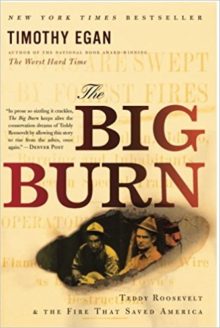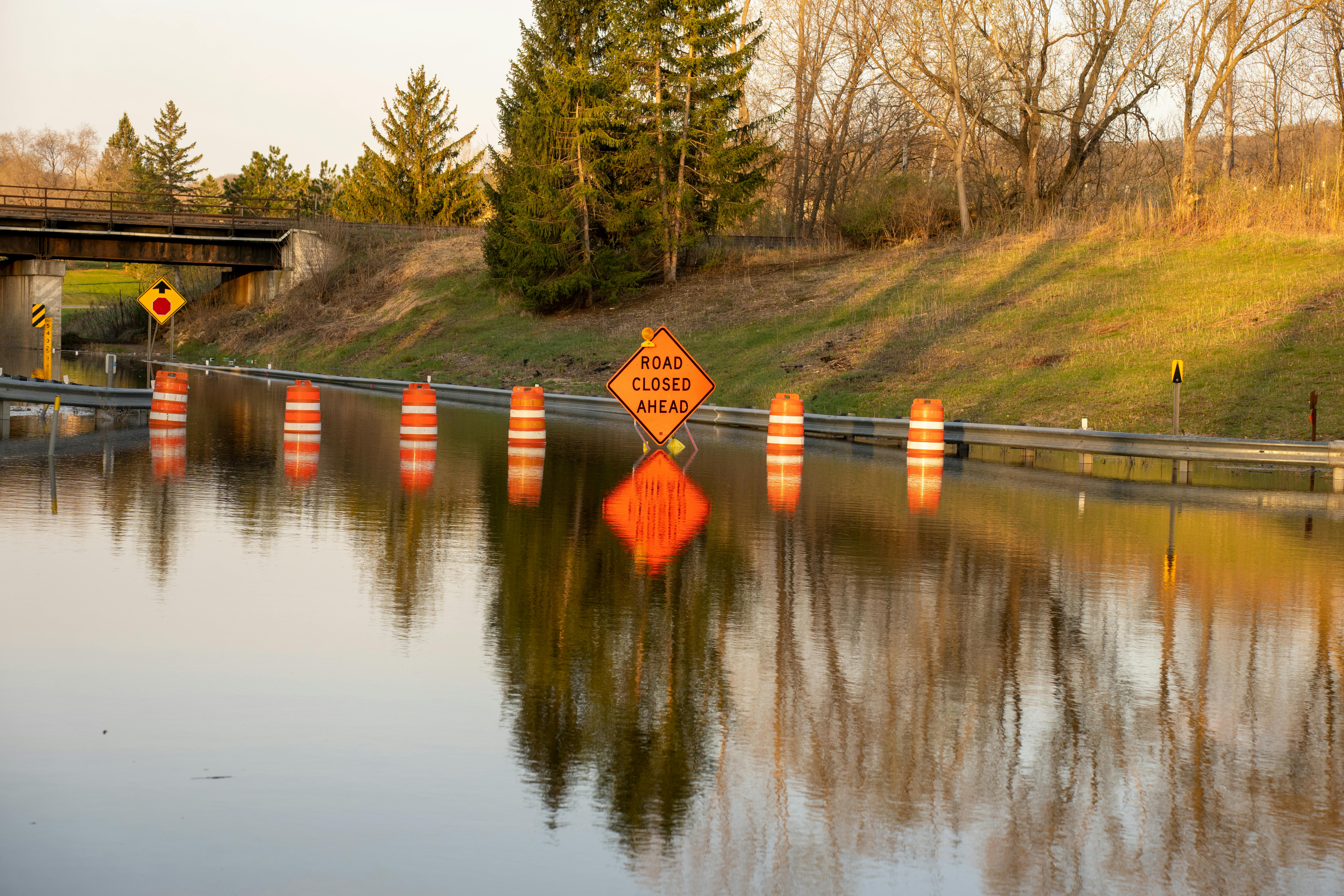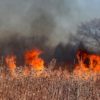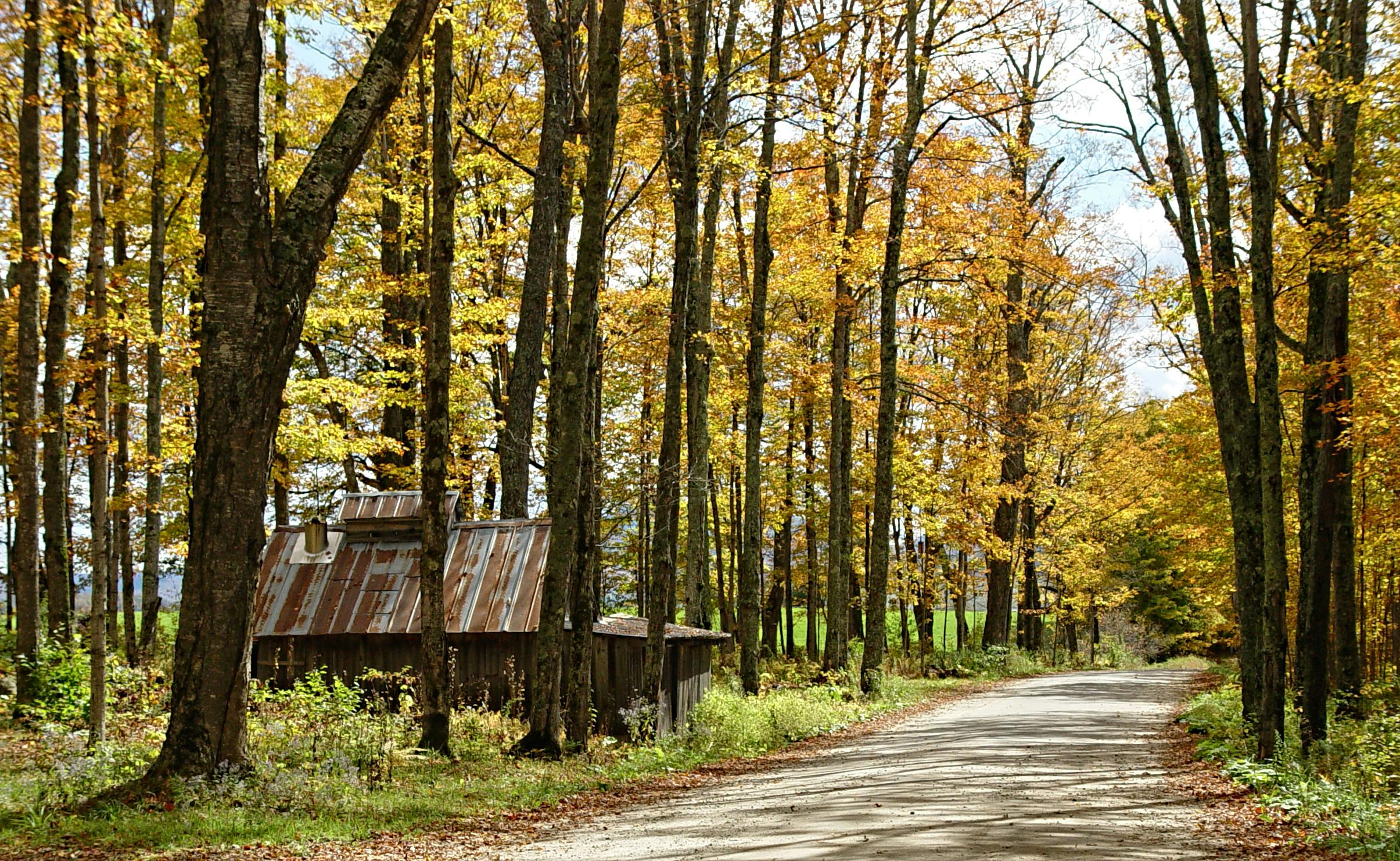In The Big Burn, author Timothy Egan takes the reader through the beginning years of environmentalist and activist John Muir’s growing friendship with then Governor Teddy Roosevelt. The book builds by highlighting their growing, shared desire to preserve the frontier and forestlands of the West. During Roosevelt’s presidency, he leaned heavily on forester and politician Gifford Pinchot to manage and develop the nationally protected forestry lands. Pinchot, in turn, formed the US Forest Service, as we know it today. Egan provides in-depth historical accounts of the politics involved in the establishment of the protected areas and the fight against unregulated land clearing by logging companies.
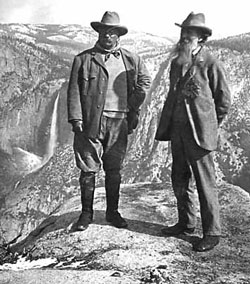
President Teddy Roosevelt & Naturalist John Muir in 1903, Yosemite, CA.
As the story leads in to 1910, Egan sets the stage by depicting a newly established forestry service still developing its forestry management plan. Many areas had no trained or allocated firefighting groups. With little-to-no fire crew system in place, Egan tells how forest rangers would have to staff their crews with any able-bodied men in town when the need arose, oftentimes from the nearby saloon. The whole situation becomes harrowing when one day in late August, a wildfire began burning out of control in the Coeur d’Alene National Forest. In response, a ranger named Ed Pulaski, was sent with a 45 man crew to work a part of the fire and ended up forced to find shelter in a nearby mine. Pulaski knew the area, was familiar with fire behavior, and was determined to save his men, even giving up his horse to an older fire fighter so the man could keep up with the crew. Pulaski kept his men sheltered in the mining tunnel overnight until the fire passed, keeping some of the panicked men inside the tunnel by force at gunpoint. The next day, he famously led them out of the forest into the nearby town to the hospital. Included in Egan’s relating of the Big Burn, as it came to be called, are many first-hand accounts and photos that pull the reader even closer into the events that occurred in the Coeur d’Alene area. The August 1910 fire across portions of Idaho, Montana, and Washington burned approximately 3 million acres of logging and mining land – nearly the size of Connecticut.
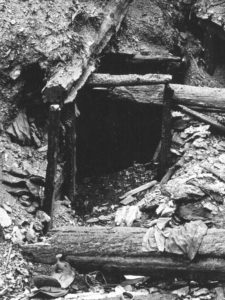
Mining tunnel where Pulaski and his crew stayed overnight – now called the Pulaski Tunnel
This book is recommended for readers interested in the historical account of the Big Burn and the inspiration for the development of the US Forestry Service and National Park Service. It is easily readable and engaging while giving an incredibly detailed and laid out history of the events surrounding this fire. Readers familiar with the wildland fire fighting world may know Pulaski’s name from the Pulaski tool credited to him (and likely created after this incident due to the need shown for better firefighting tools) that is a national standard.
For more information:
- Big Burn Film as part of the American Experience Series on PBS: http://www.pbs.org/wgbh/americanexperience/films/burn/#part01
- Author’s Book page: https://www.timothyeganbooks.com/the-big-burn/
- RedZone’s National Park Service Blog: https://www.redzone.co/2016/10/03/100-years-national-parks-service/
- RedZone’s Top Ten Facts About Wildland Fires: https://www.redzone.co/2015/12/01/top-ten-things-you-may-not-know-about-wildland-fires/

